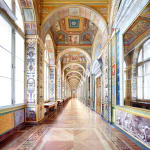
Candida Höfer German, 1944
Hermitage St. Petersburg XII 2014
Inkjet print
231 x 180 cm. (91 x 70 7/8 in.)
Edition of 6 (#1/6)
Copyright The Artist
Further images
1
/
5
